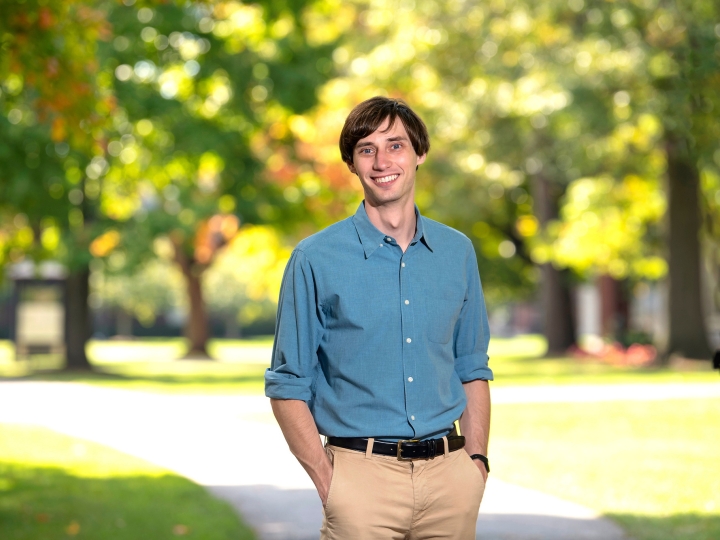
Eric Kennedy, Biomedical Engineering
June 2, 2021
Portrait of Eric Kennedy. Photo by Emily Paine, Communications.
I try to humanize the work as much as possible so we’re not just looking at raw numbers but really looking at the impact an injury or loss has on a family.
Playground mishaps are the leading cause of playtime injuries for kids under 10, and yet many parents have no idea playgrounds pose any threat.
"The numbers are surprising," says Professor Eric Kennedy, biomedical engineering. "About 200,000 children a year are injured on playgrounds and require emergency room visits, and 21,000 of those injuries are traumatic brain injuries. No one expects a child to die using a playground, but there are about 10 playground-related deaths a year in the U.S."
Kennedy first became interested in playground safety in 2012, when his students organized a child safety symposium showing that the accepted industry safety threshold for playgrounds is lower than it is in other industries.
"There are far more stringent safety protocols to prevent injury to adults in car accidents than there are for children who fall from playground equipment," Kennedy says. "I thought there was a disconnect — we had greatly advanced automotive safety, but it has not trickled down to the playground."
Kennedy has since used his background in injury biomechanics to reduce playground injuries by analyzing design, appropriateness of substrates for cushioning falls, and maintenance procedures that can prevent injury.
Kennedy and his students also recently designed and built a brake-force simulator in collaboration with orthopedic surgeons at the nearby Geisinger Medical Center in Danville, Pa. The simulator is designed to investigate whether a patient is physically able to safely drive after surgery or injury.
Kennedy says both research areas teach students the complexity of working with human subjects.
"I know if I put metal in a machine and pull it, it will always break at the same point. But if I expose two people to the same impact, one can be injured and the other can be totally fine," Kennedy says. "I like that variable. It's not definitive, which is frustrating, but it's an interesting challenge that has a tremendous human element to it."
Kennedy says focusing on that human story as part of the research makes the work more relatable and rewarding for students because it shows exactly how their efforts can improve lives.
"I try to humanize the work as much as possible so we're not just looking at raw numbers, but really looking at the impact an injury or loss has on a family," Kennedy says. "Students love it because it's so approachable and everyone understands what they’re doing. That's part of the allure of biomedical engineering."

